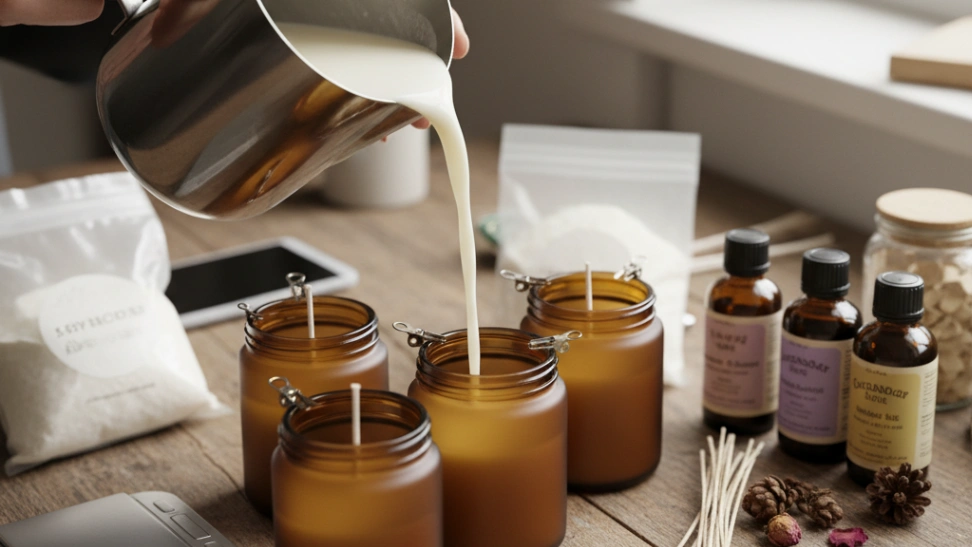The history of candle making stretches back thousands of years, with evidence suggesting early civilizations used various forms of illumination. Ancient Egyptians utilized rushes dipped in animal fat, while Romans developed wicked tallow candles. The Chinese were among the first to use insect wax in paper tubes, and in India, boiled cinnamon wax was used in temples. The Middle Ages saw widespread use of tallow candles, often produced in homes or by chandlers, though they burned with a smoky flame and unpleasant odor. Beeswax candles, burning cleaner and brighter, became popular among the wealthy and in churches. The invention of spermaceti wax from whale oil in the 18th century marked a significant step forward, providing a harder, whiter, and brighter-burning candle. The 19th century brought further innovations with the discovery of stearin (from animal fats) and paraffin wax (a byproduct of petroleum refining), making candles more affordable and accessible to the masses. These developments democratized candle usage, moving them from a necessity for light to an item of comfort, ceremony, and decoration. Today, the craft continues to evolve with a vast array of waxes like soy and coconut, diverse fragrances, and innovative designs, making it a rich tapestry of historical ingenuity and modern artistic expression. This long and varied history underscores the fundamental human need for light, warmth, and ritual, which candles have consistently provided across cultures and millennia. The evolution of materials and techniques reflects humanity's continuous quest for better, cleaner, and more aesthetically pleasing illumination, culminating in the diverse and accessible craft we know today.
At its core, candle making is a fascinating blend of science and art. The process begins with selecting the right wax, which can range from traditional paraffin to more eco-friendly options like soy, beeswax, or coconut wax, each offering different burn characteristics and scent throw. Temperature control is crucial: wax must be melted to a specific degree, and additives like fragrance oils and dyes are introduced at precise stages to ensure optimal blending and performance. The choice of wick is equally vital, needing to match the wax type and container diameter to ensure a clean, even burn without tunneling or excessive soot. Beyond the technicalities, candle making truly shines as a creative outlet. Makers can experiment with an almost infinite palette of colors and an extensive library of fragrance oils, from comforting vanilla to refreshing citrus, complex woody notes, or delicate florals. The vessel itself becomes part of the artistic statement, with options ranging from elegant glass jars and rustic ceramic pots to upcycled containers, each contributing to the candle's overall aesthetic. Layering colors, embedding decorative elements like dried flowers or crystals, and playing with different pouring techniques add further dimensions to the craft, allowing each candle to become a unique piece of art. The ability to customize every aspect means that no two handmade candles are ever truly identical, fostering a deep sense of personal accomplishment and artistic freedom. This creative freedom extends to developing a signature style, whether it’s minimalist designs, elaborate multi-layered creations, or themed collections for holidays and special occasions.
Engaging in candle making offers numerous therapeutic benefits. The methodical steps involved, from melting wax to placing wicks, can be incredibly calming and meditative. The act of creating something beautiful and functional with one's own hands provides a deep sense of satisfaction and boosts self-esteem. It's a sensory experience, too – the gentle warmth of the melting wax, the evolving aromas of essential or fragrance oils, and the visual transformation of raw materials into a finished product all contribute to a delightful and immersive hobby. For many, candle making becomes a way to de-stress and unwind after a busy day. Furthermore, the handmade nature of candles makes them perfect for thoughtful gifts, allowing personal touch and customization for friends and family. This can even evolve into a small business venture for those who discover a passion and talent for the craft, selling their unique creations at local markets or online. The candle making community is vibrant and supportive, with numerous online forums, social media groups, and workshops where enthusiasts share tips, troubleshoot problems, and showcase their latest creations. This sense of camaraderie and shared passion enriches the hobby, providing opportunities for learning, inspiration, and connection with fellow makers worldwide. Whether pursued as a solitary, calming activity or a shared creative endeavor, candle making offers a rewarding path to express oneself and illuminate life with warmth and fragrance.



